Navigating the world of tech partnerships can be exciting, but it comes with its own set of challenges, especially when it comes to confidentiality. Enter the non-disclosure agreement (NDA) â a crucial tool that ensures your innovative ideas and sensitive information remain protected. This document not only fosters trust between partners but also sets the stage for successful collaboration. Curious about how to draft an effective NDA for your tech partnerships? Keep reading for essential tips and a comprehensive template!
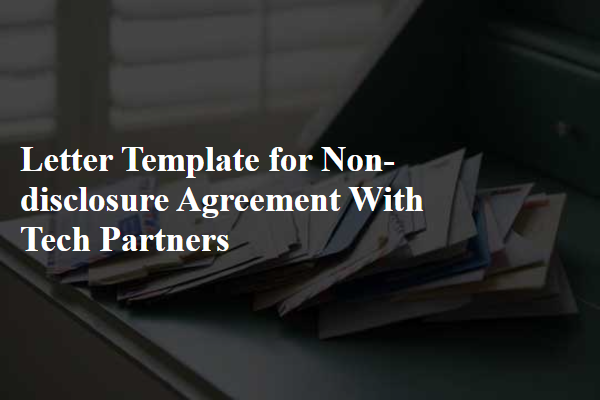
Parties involved and relationship.
Developing a robust non-disclosure agreement (NDA) involves clearly defining the parties involved and outlining their relationship, particularly in a technology partnership. For example, Company A, a leading software development firm based in Silicon Valley, California, engages in a collaborative relationship with Company B, an innovative tech startup specializing in artificial intelligence solutions. These entities will share sensitive information related to proprietary algorithms and project specifications for a joint application designed to enhance user experience. Clearly stating these relationships and the nature of shared information establishes a strong legal foundation for protecting intellectual property and confidential communications between the parties.
Definition of confidential information.
Confidential information encompasses proprietary data, trade secrets, technical specifications, software codes, design plans, and business strategies shared between technology partners, such as innovative algorithms or process methodologies. This information is critical for maintaining competitive advantage and market positioning, specifically in sectors like software development, cybersecurity, or data analytics. Confidential information also includes documentation, reports, and communications that are clearly marked as confidential. Unauthorized disclosure or misuse of this data can lead to severe financial penalties and irreversible harm to intellectual property. Protection measures must be established to safeguard this sensitive information throughout collaboration.
Obligations regarding confidentiality.
A Non-Disclosure Agreement (NDA) with technology partners outlines critical obligations concerning confidentiality to protect sensitive information. Parties involved, such as software developers and hardware manufacturers, must ensure that proprietary data--including project specifications, algorithms, and source code--remains confidential. The NDA typically specifies timeframes for keeping information private, often extending beyond the collaboration term, which might last several years. In cases of breaches, consequences can range from monetary penalties to legal action. Clear definitions must categorize what constitutes confidential information, particularly terms like "trade secrets" and "intellectual property". Additionally, the NDA might define permissible purposes for data access, such as product development or joint ventures, ensuring that all parties understand the limits of information use. Entities should also discuss the handling of documents and electronic files containing confidential information to prevent inadvertent disclosure.
Exceptions and exclusions.
The non-disclosure agreement (NDA) for tech partners typically includes key exceptions and exclusions to confidentiality obligations. Common exceptions encompass information already in the public domain, previously known information prior to the NDA, and information independently developed by the receiving party without the use or reference to the disclosed confidential information. Exclusions may include information disclosed under legal compulsion, such as subpoenas or court orders, and any information approved in writing by the disclosing party for public release. Specific terms might reference industry standards, such as the Tech Partnership Agreement of 2023, to clarify the scope of retained confidentiality and the responsibilities of each party involved.
Duration and termination.
A non-disclosure agreement (NDA) outlines the importance of confidentiality between parties, particularly in technology partnerships where sensitive information, such as algorithms, client data, or proprietary software, may be shared. The duration of the agreement typically spans a specified period, often ranging from one to five years, during which all disclosed information remains confidential. Termination clauses may state that the agreement can be terminated upon mutual consent or after a breach of terms, with the expectation that all confidential materials are returned or destroyed. Additionally, post-termination obligations might require that all proprietary info remains undisclosed even after the agreement ends.
Letter Template For Non-Disclosure Agreement With Tech Partners Samples
Letter template of Non-Disclosure Agreement for Technology Collaboration
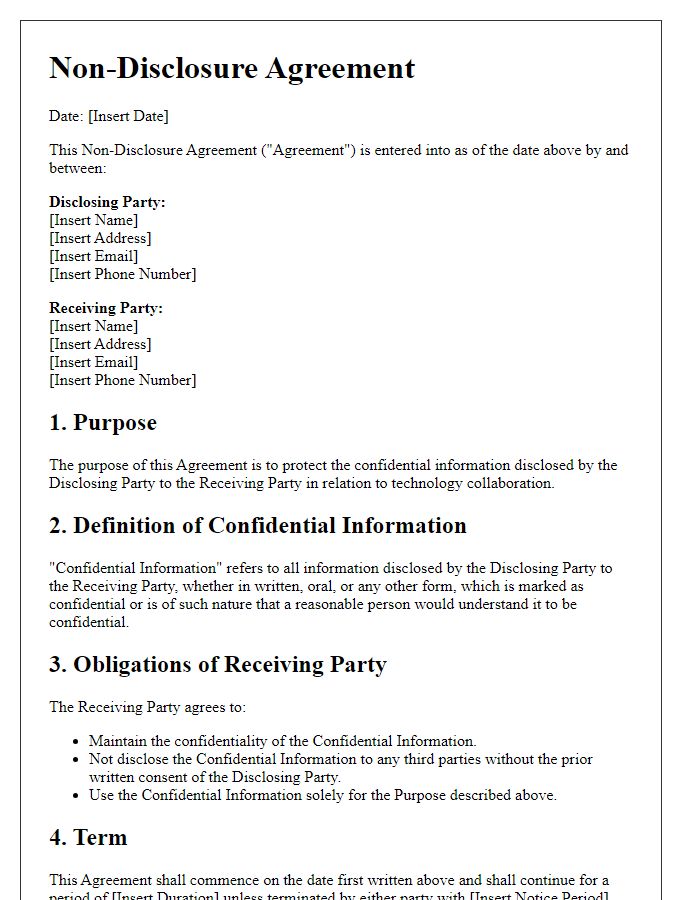
Letter template of Technology Non-Disclosure Agreement for Joint Ventures
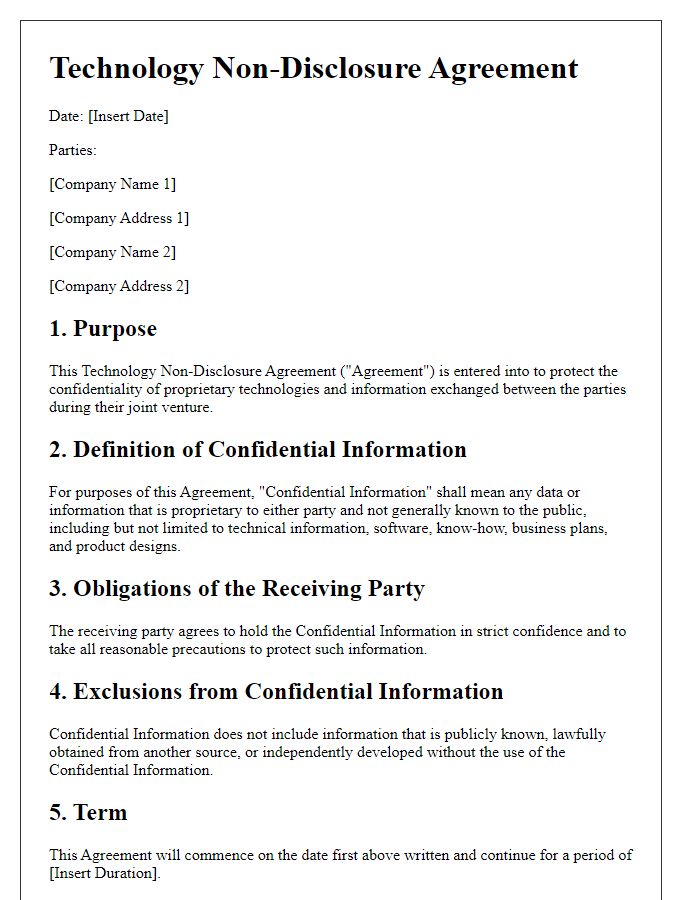
Letter template of Mutual Non-Disclosure Agreement for IT Collaborations
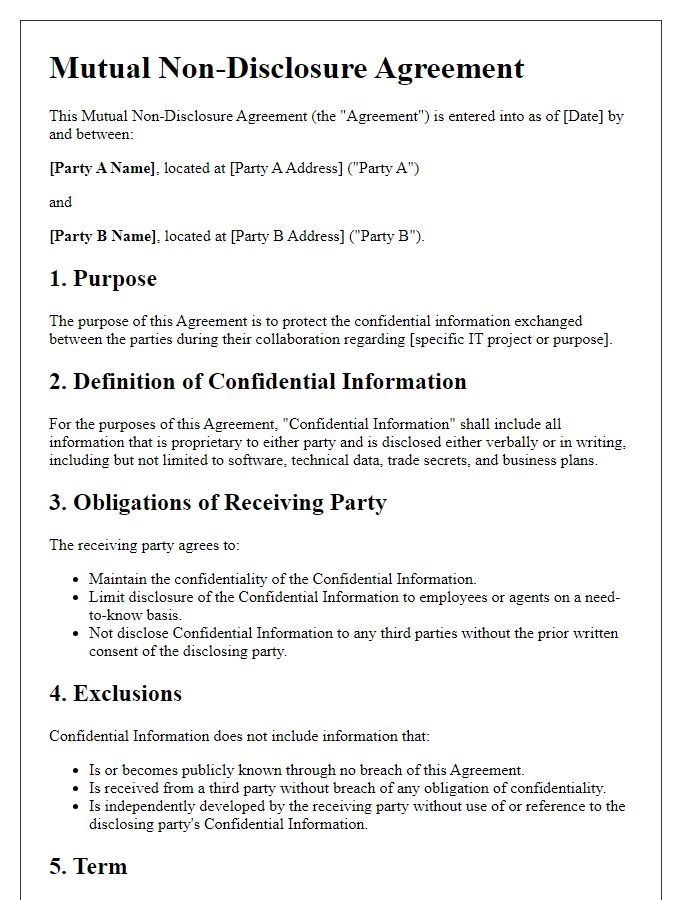
Letter template of Non-Disclosure Agreement for Emerging Technology Partners
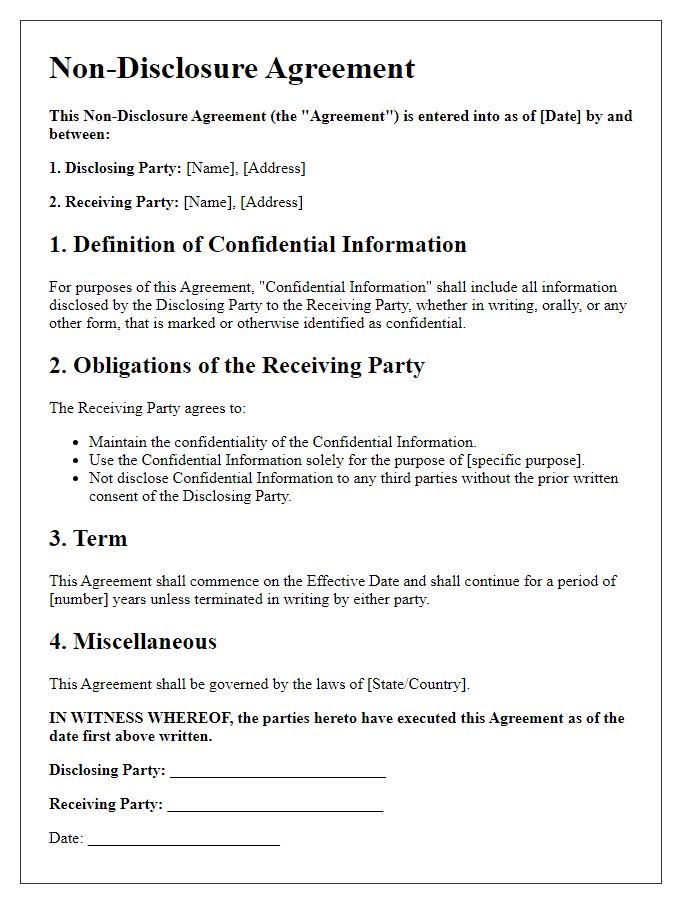

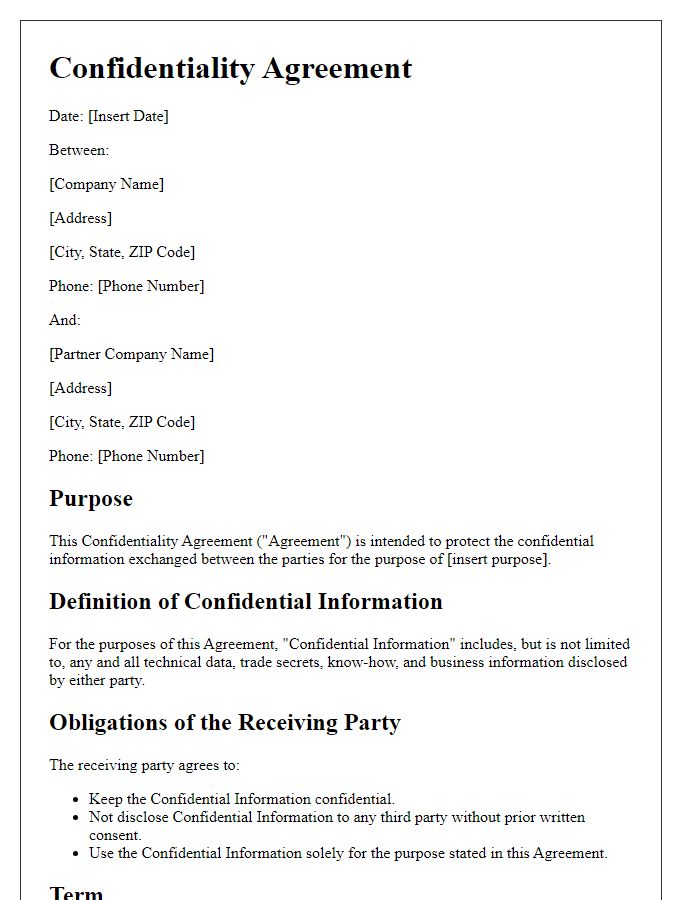
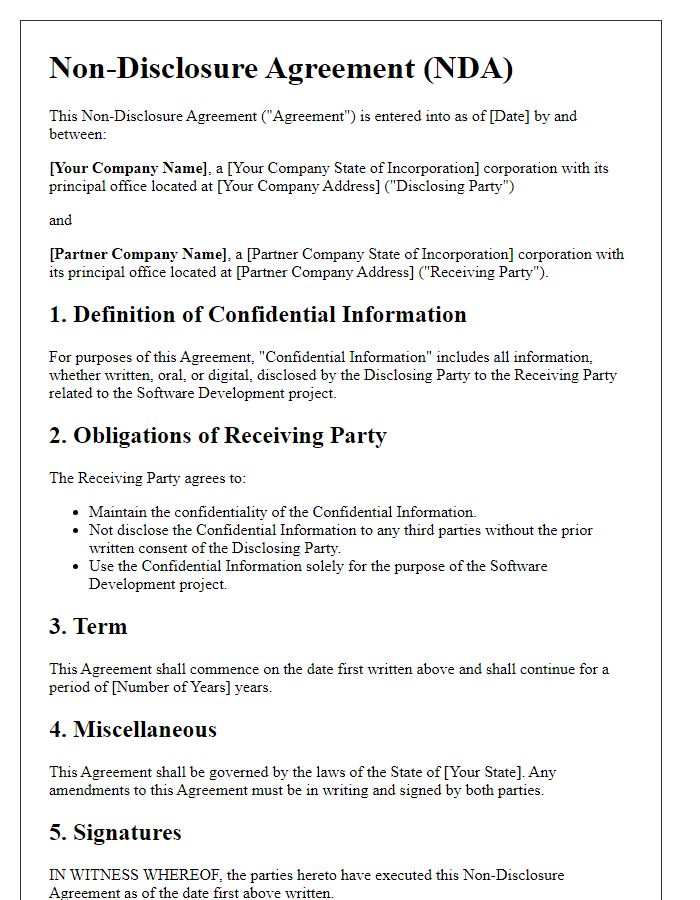
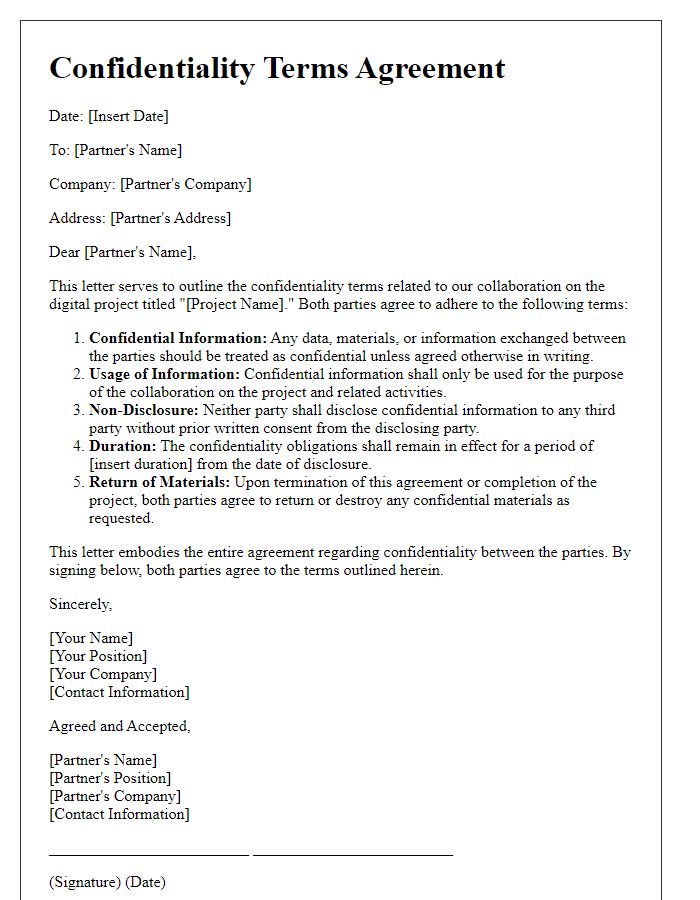
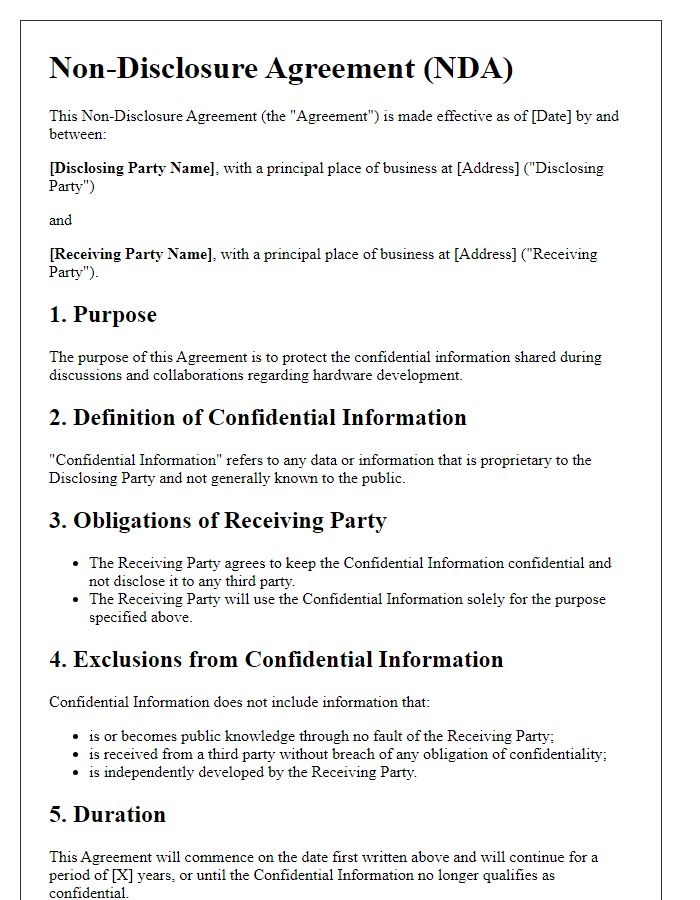
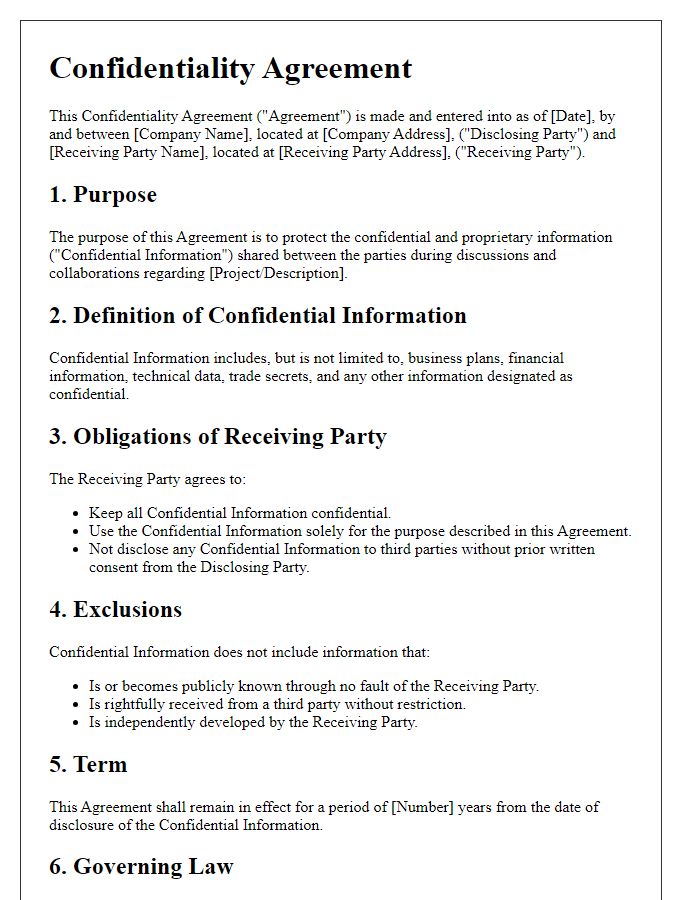
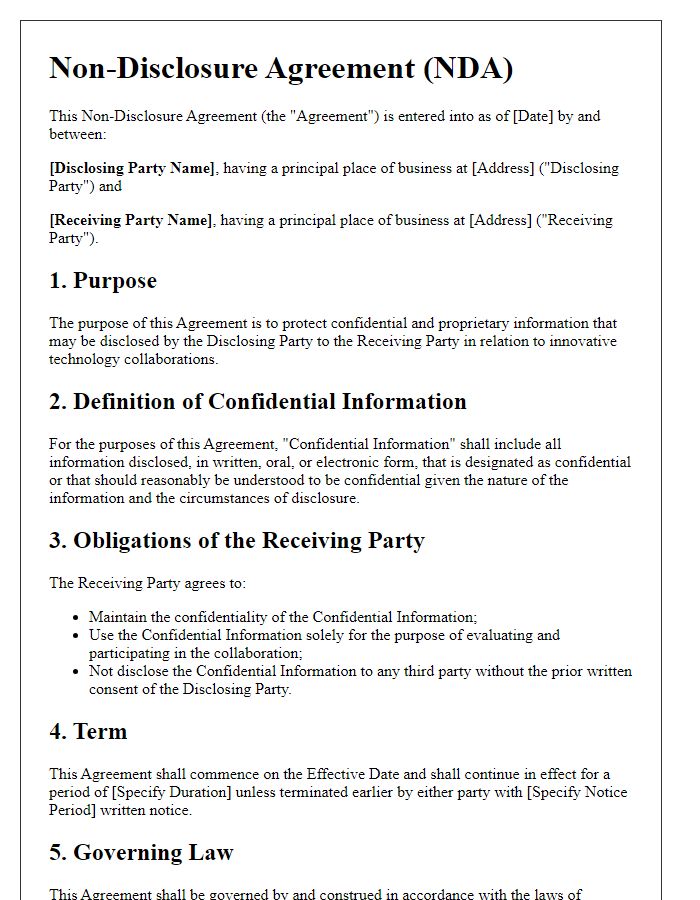


Comments